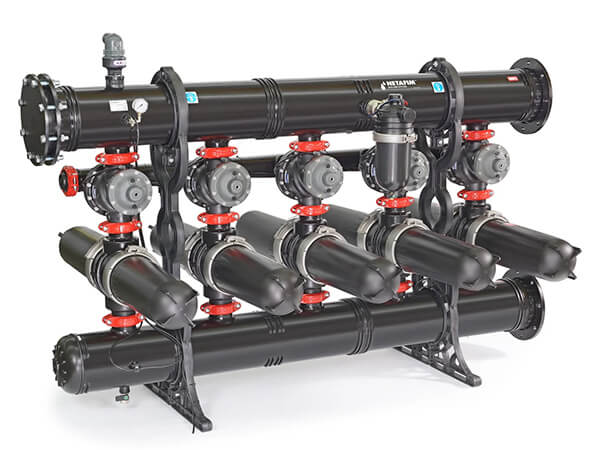A disc filter is a type of water filter used primarily in irrigation, similar to a screen filter, except that the filter cartridge is made of a number of plastic discs stacked on top of each other like a pile of poker chips. Each disc is covered with small grooves or bumps. The discs (or rings) each have a hole in the middle, forming a hollow cylinder in the middle of the stack. The water passes through the small passages in between and the impurities are trapped behind.

The filtration quality is based on the quantity and size of particles that the filtering element is able to retain. Higher quality filtration simply means cleaner water. This depends on the geometry of the channels, including the size, length, angle, and number of generated intersection points.The discs are typically color coded to denote the level of filtration.Filtration quality is usually measured in microns, based on the smallest size particle filtered. The typical range is from 25 microns for the finest level of filtration to 400 microns for the coarsest.Sometimes the filtration quality is given as the equivalent mesh size of a comparable screen filter. Typical mesh sizes range from 40 to 600. When using mesh sizes, 40 is the coarsest and 600 is the finest or highest level of filtration.
How auto-flush disc filter works?
There are a large number of grooves on both sides of the plastic laminated sheet. A plate of the same pattern is pressed on a specially designed inner brace. When the spring and liquid pressure are pressed, the grooves between the laminates cross, thus creating a deep filter unit with a unique filter channel, which is installed in a super performance engineering plastic filter tube to form a disc filter.
During filtration, the filter laminates are pressed by spring and fluid pressure, and the greater the pressure difference, the stronger the compression force. It ensures self-locking and high efficiency filtration. liquid flows from the outer edge of the lamination through the groove to the inner edge of the lamination through 18~32 filtration points, thus forming a unique deep filtration. After filtration, release the laminates by hand or hydraulic pressure for manual cleaning or automatic backwash.
Benefits
- Stable filtration effect
- Simple operation, easy maintenance
- Deep filtration, excellent ability to stop pollution
- Low operating cost, reliable performance, long life
